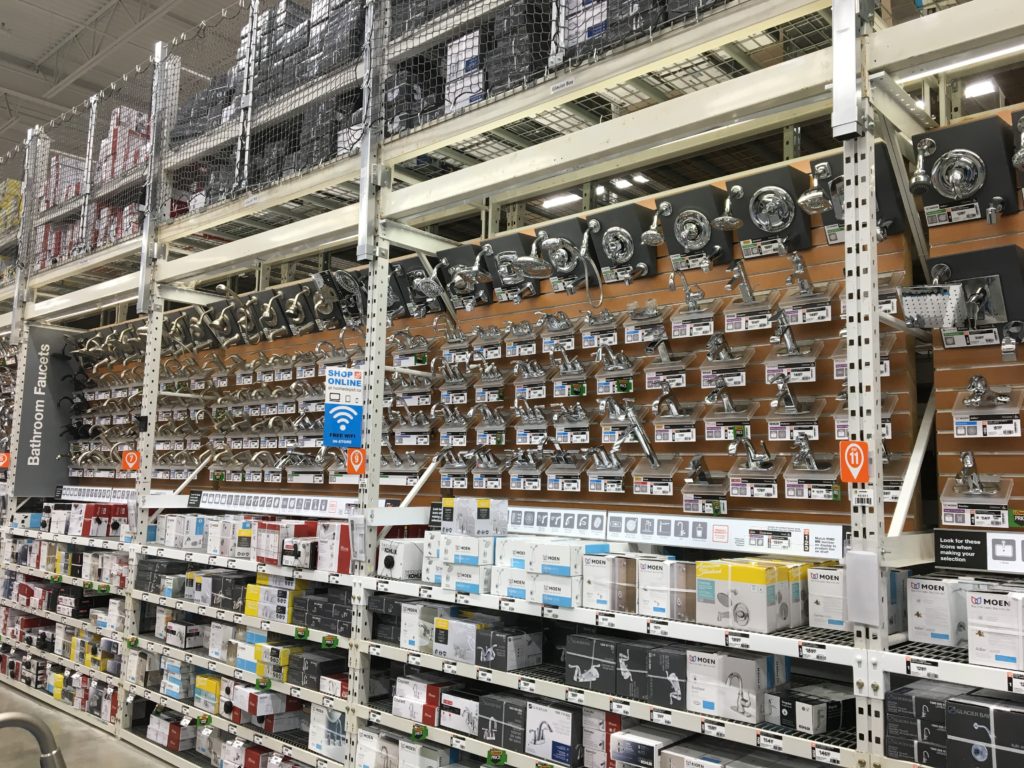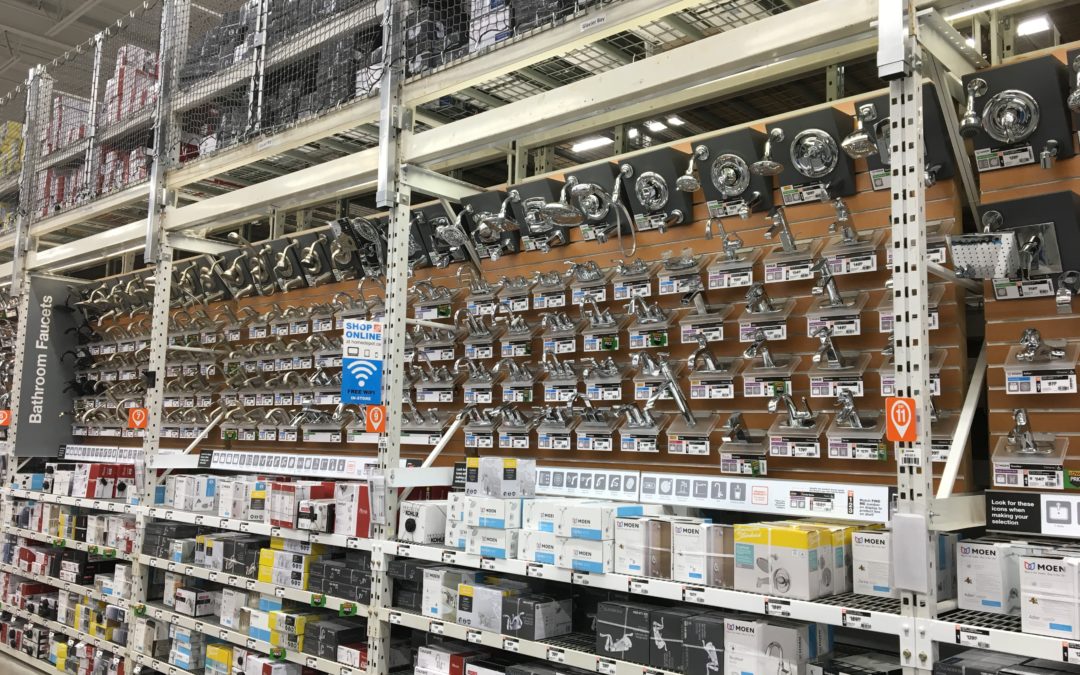Six Lessons in Merchandising Matters
 I’ve seen many hundreds of stores in the last few years. Some are amazingly well merchandised, some are a travesty and most are somewhere in between – their owners trying to figure out what to do to improve while coping with the pressures of everyday business.
I’ve seen many hundreds of stores in the last few years. Some are amazingly well merchandised, some are a travesty and most are somewhere in between – their owners trying to figure out what to do to improve while coping with the pressures of everyday business.
Here are some lessons I’ve learned along the way.
Depth or Breadth?
I’ve often been asked what’s more important; depth or breadth of inventory. It’s kind of like asking what’s more important: food or sleep? You need both but for different reasons. There’s no sense putting something on the shelf if you never have enough to meet your customer’s requirements. A simple example would be having five copper elbows in the bin. Similarly, there’s no sense stocking only the best-selling components in any project category and ignoring the rest—for example, eavestrough without inside corners or single pole switches but no 3 pole. The other extreme of what not to do is buying a year’s worth of stock because the price is right or stocking 115 different tape measures.
Adjacencies Matter
The right product groupings make it easy for customers to find what they came for, and to find what they didn’t come for but actually need. Average sales go up, service levels go up, and labor costs go down as customers more easily self serve. Years ago, Lansing Buildall developed the store of the future based on project merchandising. Great concept, right? Actually, it was somewhat of a disaster. Door locks were only in LBM with the doors. Cabinet hardware was only in the kitchen department. Nails were in different parts of the store depending on application.
Service ratings were in the toilet because there was never enough staff to answer all the technical questions like “Where are the… ” or “Don’t you have any….” After seven years, customers still hadn’t figured it out and sales continued to languish. We then re-merchandised the store along more traditional lines and sales almost doubled.
Consider Product Flow
Confucius say: “If it’s not easy to move product in and out of the store, less product will move in and out of the store.” Three reasons for this are staff, product and customers. Staff because they are time constrained and human, product because it tends to get damaged if improperly stored or excessively handled, and customers because they are time constrained and human and always have the option to shop in a box store.
Define Your Target Customer
Once established this should be printed on top of every purchase order and every employees’ paycheque. Make sure you do everything in your power to satisfy your target customer. Doing this will attract more of that type of customer. This has many advantages. Inventory turns faster. Staff becomes more confident, knowledgeable and effective. Your growing expertise in serving this customer creates a competitive edge that sets you apart in your market. When we renovate stores a key step is to eliminate fringe categories that do little to serve core customers and are almost certainly unprofitable.
Set It and Leave It
Store managers seem to relish tinkering with the merchandising. They move products from A to B to C and then back to A again. This helps fill their day, burn wages and keep customers guessing but… little more. This is not what happens in the big box stores. They put a lot of thought and planning into creating a layout and merchandising plan. Once set, it’s not to be tampered with at store level. This means managers can spend their time training and managing staff, ensuring standards for housekeeping, stock levels and service levels are maintained, and interacting with customers.
Display What You Sell
I once had a seasoned store manager convince me to remove mouldings and dressed lumber from the store to make room for more seasonal product. His logic seemed reasonable. They’d been selling mouldings from that location for more than 20 years and he was sure all their customers knew that they sold mouldings. The results were immediate: a thirty percent drop in moulding sales.
Six months later we reversed the decision and brought mouldings back into the store and sales reversed themselves immediately. Smaller stores have learned from the box stores and are devoting more space to out of the box displays. This is made easier with new fixture options which add merchandising capacity and ways to better organize product presentations. The result is less ripped open packages, a more appealing store and higher sales.
In Summary
- Confucius say: “If it’s not easy to move product in and out of the store, less product will move in and out of the store.”
- Store managers seem to relish tinkering with the merchandising. This helps fill their day, burn wages and keep customers guessing.
- The right product groupings make it easy for customers to find what they came for, and to find what they didn’t come for but actually need.
Burlington Merchandising & Fixtures provides innovative merchandising solutions to both retailers and vendors with a focus on driving sales and profitability. Contact us today to get started!
You might also like:


